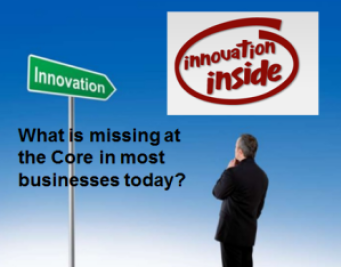 A three-part series on rethinking the management of the innovation system.
A three-part series on rethinking the management of the innovation system.
Part two, recognizing the broken process we currently have that stops innovation from becoming a core.
The innovation process and the structures build into our organization certainly need to be changed.
I outline here different barriers that require a change to bring innovation more into the core of a business.
Today, we are needing to build greater agility and responsiveness into our innovative design to counter a more rapidly changing market, sensing changing conditions and ‘seize’ breaking opportunities. .
A new combination of speed, flexibility, networking and focusing on adapting and fusing the skills and capabilities needed, will require changes in our innovation work.
Our current structures and processes for innovation are holding us back and will continue to not deliver the expected results needed today or the future, giving real growth and sustainability. We do need a far more radical approach to a solution for managing innovation inside our organizations.
Continue reading “Moving Innovation into our Core – Part Two”


